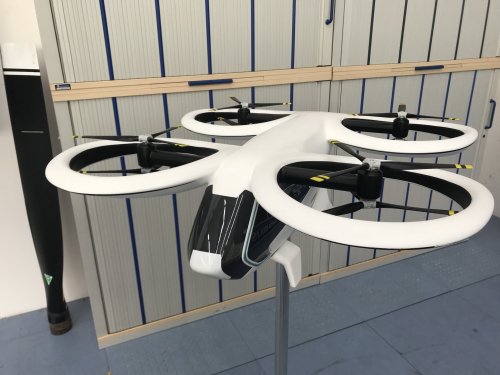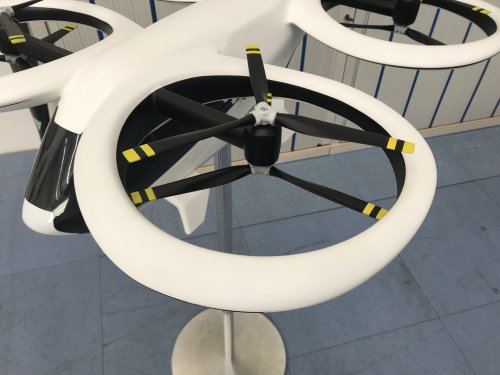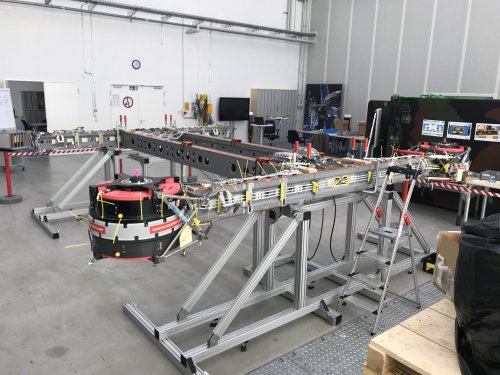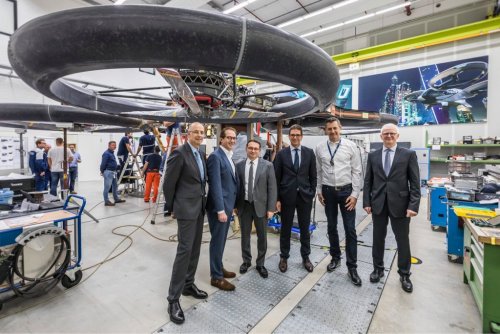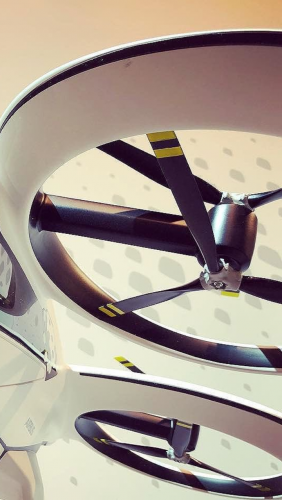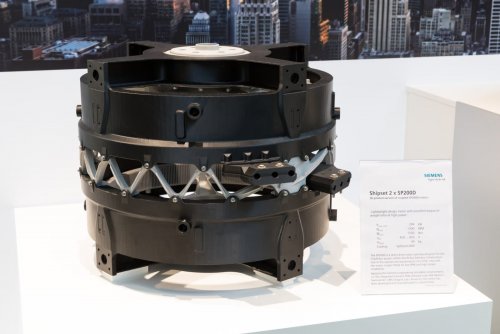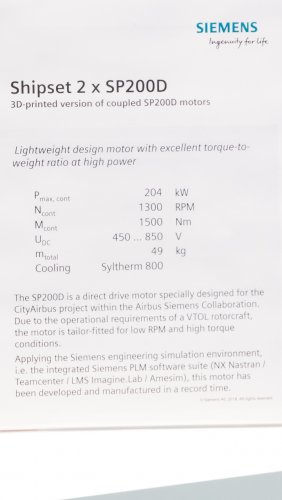Viper2000
I really should change my personal text
- Joined
- 8 June 2018
- Messages
- 28
- Reaction score
- 51
It looks as though the aft fans will swallow the slipstream of the front fans, which doesn't seem very sensible.
I agree with the noise comments; low blade number & activity factor imply fairly high tip MN, which isn't good for noise; not convinced by the selection of 6 stators either, though there isn't really enough duct for cut-off. I am also surprised by the apparent lack of liner in the duct.
I suppose they may just want to build something which flies for PR & will then do a load of trouble-shooting to get acceptable behaviour down the line, but it doesn't strike me as a sensible configuration because it's got such a low wetted aspect ratio, so cruise L/D will be poor (probably significantly less than 6, with my intuition being nearer to 4), whilst the higher disc loading compared with a helicopter will hurt hover performance, as will the transmission losses inherent in all these hybrid-electric schemes.
Indeed, the flight displays in the exhibit imply a cruise speed of (edit) less than 100 KTAS (86 KIAS is 100 KTAS at FL100) (/edit), which is really disappointing, & extra load on the aft rotors (presumably due to the aforementioned slipstream ingestion problem. This requires 100% torque from the GT, which adds to the coefficient of disappointment. The Verge claims that the payload capability is only 600 lbm (272 kg) (https://www.theverge.com/2019/1/7/18168814/bell-air-taxi-nexus-uber-flying-car-hybrid-ces-2019) which means that some of the 5 seats are presumably for show. I note that The Verge also claims 150 mph top speed; this would obviously require assistance from the battery. It's not obvious to me that they can really do this because the average torque in the screenshot is about 70%, so we might reasonably expect the top speed to be 100 KTAS * (1/0.7)^(1/3 = 112 KTAS, or 128 mph, assuming fixed propeller efficiency & drag coefficient (both of which are likely to be optimistic assumptions).
Interestingly 112 KCAS at FL100 is about 150 mph TAS, so it may be that somebody has double-accounted the air density effect, which would be rather embarrassing if true...
At this level of performance, surely you'd be better off in a helicopter? An R66 will do everything that the Bell concept will do (apart from not be a helicopter): https://robinsonheli.com/r66-specifications/
; 50% more payload 10 knots faster in a smaller package without all the electrickery.
From a safety perspective, it doesn't look great either. The lack of any sort of variable area system will force the ducted propellers to be variable pitch, & so the critical failure mode is likely to be blade pitch actuator failure; it's an interesting debate as to what the worst case might be, but I'd want to pay particular attention to failure of either a front or outboard system at maximum dynamic pressure, as I can see that being very exciting & potentially breaking the vehicle or imposing some sort of placard (this may be the driver behind the biplane vertical tail), though I suppose the low cruise speed capability will tend to mitigate this risk to a significant extent, though the fact that departure doesn't break the aircraft doesn't mean that it's recoverable.
Duct misalignment during transition would also probably be extremely exciting, & I note with interest that there doesn't appear to be any way for the pilot to actually see what the ducts are doing (the rear ducts being a particular concern) so that sensor failure could easily lead to an XC-142 type accident.
I hope that great care is taken to make sure that these vehicle are genuinely safe before they start flying over urban areas.
I agree with the noise comments; low blade number & activity factor imply fairly high tip MN, which isn't good for noise; not convinced by the selection of 6 stators either, though there isn't really enough duct for cut-off. I am also surprised by the apparent lack of liner in the duct.
I suppose they may just want to build something which flies for PR & will then do a load of trouble-shooting to get acceptable behaviour down the line, but it doesn't strike me as a sensible configuration because it's got such a low wetted aspect ratio, so cruise L/D will be poor (probably significantly less than 6, with my intuition being nearer to 4), whilst the higher disc loading compared with a helicopter will hurt hover performance, as will the transmission losses inherent in all these hybrid-electric schemes.
Indeed, the flight displays in the exhibit imply a cruise speed of (edit) less than 100 KTAS (86 KIAS is 100 KTAS at FL100) (/edit), which is really disappointing, & extra load on the aft rotors (presumably due to the aforementioned slipstream ingestion problem. This requires 100% torque from the GT, which adds to the coefficient of disappointment. The Verge claims that the payload capability is only 600 lbm (272 kg) (https://www.theverge.com/2019/1/7/18168814/bell-air-taxi-nexus-uber-flying-car-hybrid-ces-2019) which means that some of the 5 seats are presumably for show. I note that The Verge also claims 150 mph top speed; this would obviously require assistance from the battery. It's not obvious to me that they can really do this because the average torque in the screenshot is about 70%, so we might reasonably expect the top speed to be 100 KTAS * (1/0.7)^(1/3 = 112 KTAS, or 128 mph, assuming fixed propeller efficiency & drag coefficient (both of which are likely to be optimistic assumptions).
Interestingly 112 KCAS at FL100 is about 150 mph TAS, so it may be that somebody has double-accounted the air density effect, which would be rather embarrassing if true...
At this level of performance, surely you'd be better off in a helicopter? An R66 will do everything that the Bell concept will do (apart from not be a helicopter): https://robinsonheli.com/r66-specifications/
; 50% more payload 10 knots faster in a smaller package without all the electrickery.
From a safety perspective, it doesn't look great either. The lack of any sort of variable area system will force the ducted propellers to be variable pitch, & so the critical failure mode is likely to be blade pitch actuator failure; it's an interesting debate as to what the worst case might be, but I'd want to pay particular attention to failure of either a front or outboard system at maximum dynamic pressure, as I can see that being very exciting & potentially breaking the vehicle or imposing some sort of placard (this may be the driver behind the biplane vertical tail), though I suppose the low cruise speed capability will tend to mitigate this risk to a significant extent, though the fact that departure doesn't break the aircraft doesn't mean that it's recoverable.
Duct misalignment during transition would also probably be extremely exciting, & I note with interest that there doesn't appear to be any way for the pilot to actually see what the ducts are doing (the rear ducts being a particular concern) so that sensor failure could easily lead to an XC-142 type accident.
I hope that great care is taken to make sure that these vehicle are genuinely safe before they start flying over urban areas.


